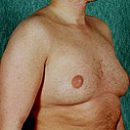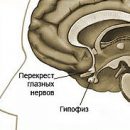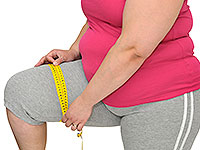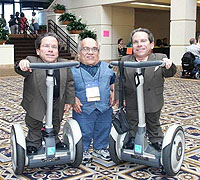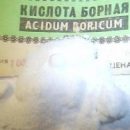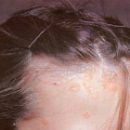The nodal goiter is a collective concept in which all the formation of the thyroid gland has different morphological characteristics. To diagnose the disease, both instrumental and laboratory studies are used.
Content
Concept of nodal zob
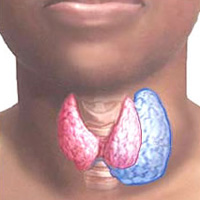 Nodal goiter - a collective clinical concept that combines all thyroid formation having various morphological characteristics. Under the term «knot» In clinical practice, it means an education in the thyroid gland of any size having a capsule determined by palpatorially, or with an ultrasound. The magnitude of the palpable node, as a rule, exceeds 1.0 cm. Using the ultrasound method, you can reveal nodes and smaller sizes.
Nodal goiter - a collective clinical concept that combines all thyroid formation having various morphological characteristics. Under the term «knot» In clinical practice, it means an education in the thyroid gland of any size having a capsule determined by palpatorially, or with an ultrasound. The magnitude of the palpable node, as a rule, exceeds 1.0 cm. Using the ultrasound method, you can reveal nodes and smaller sizes.
Endemic nodal goiter - the basis of development is the deficit of iodine.
Solitary assembly - the only formation in the thyroid gland.
Multicate goiter - multiple encapsulated formations in the thyroid gland, not soldered.
Conglomerate nodal goiter - several nodes in the thyroid gland, soldered together.
True cyst - a cavity containing liquid.
Diffuse-nodal goiter - node (knots) on the background of a diffuse increase in thyroid gland.
Tumors of the thyroid gland - benign, malignant.
Causes of disease development
Nodal formations in the thyroid gland belong to very common thyroid disease. It is known that about 10% of the population of the globe have certain focal flavors of the thyroid gland. Since the concept of nodal goiter is collective, the pathogenesis of this disease is due to or other reasons in each particular case, depending on the morphological form of nodal education.
Most often, patients with nodes in the thyroid gland do not impose any complaints. Sometimes there is a sense of discomfort in the neck area, a feeling of pressure in the neck.
Methods for diagnosing nodal goiter
If you confirmed the diagnosis of nodal goiter with ultrasound what needs to be done next?
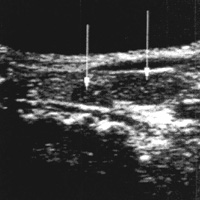 First, be sure to sign up for the reception to the endocrinologist, t.To. postpone it in a long box can not. The further tactics of the doctor depends on the clinical picture and characteristics of the node (nodes). The doctor may offer to hold:
First, be sure to sign up for the reception to the endocrinologist, t.To. postpone it in a long box can not. The further tactics of the doctor depends on the clinical picture and characteristics of the node (nodes). The doctor may offer to hold:
- Hormonal examination (thyroxine, triiodothyronine, thyroglobulin, calcitonin)
- Thin-game puncture biopsy of the thyroid gland
- Radioisotope Study (Scanning) of the Thyroid gland
- Radiographic examination of the chest with the contrasting of the esophagus Barium
- Computer and magnetic resonance tomography of the thyroid gland
Diagnostics with zero zob.
Hormonal examination (thyrotropic hormone, thyroxine, triiodothyronine, thyroglobulin, calcitonin).
The study of the level of thyrotropic hormone and thyroid hormones is shown to all patients with nodal goiter.
Increased content of thyreoglobulin in the blood is characterized by many thyroid diseases. The concentration of thyroglobulin is not a differential marker of benign and malignant tumors. The diagnostic value of this indicator is important after surgery about the thyroid cancer, during recurrence and metastasising its content in the blood increases. The normal content of calcitonin in the blood does not exceed 10 pg / ml. The level of this marker is more than 200 pg / ml, is the most important criterion of the medullary cancer of the thyroid gland.
Ton-needle punkey biopsy of the thyroid gland.
The thin-game punkey biopsy of the thyroid gland is the only preoperative method of confirmation or refutation of the diagnosis of the tumor of the thyroid gland, including malignant. All non-formation of the thyroid gland, which can be pasted, must be subjected to this procedure.
Radioisotope Study (Scanning) of the Thyroid gland.
Scanning allows you to judge the location of the thyroid gland, form, sizes, functional activity of nodal formations. The minimum size of the nodal education detected on the scanogram is 1 cm. It is believed that with the help of this method, you can assume the presence of cancer in the thyroid gland. Painting «cold» the node occurs with benign and malignant neoplasms, and «hot» node with toxic adenoma, nodal proliferating zob. It must be remembered that with the help of this procedure it is impossible to accurately determine the presence of malignant neoplasms.
Radiographic examination of the chest with the contrasting of the esophagus Barium.
This study allows you to identify the presence of a narrowing or displacement of the trachea and esophagus in a patient with a nodal goiter. Indications: nodal goiter 3-4 degrees, prudged nodal goiter.
Computer and magnetic resonance tomography of the thyroid gland.
This study is rarely carried out due to the high cost of equipment. With this study, you can determine the localization of the thyroid gland, its contours, sizes, structure, lymph nodes, determine the density of the nodes.

